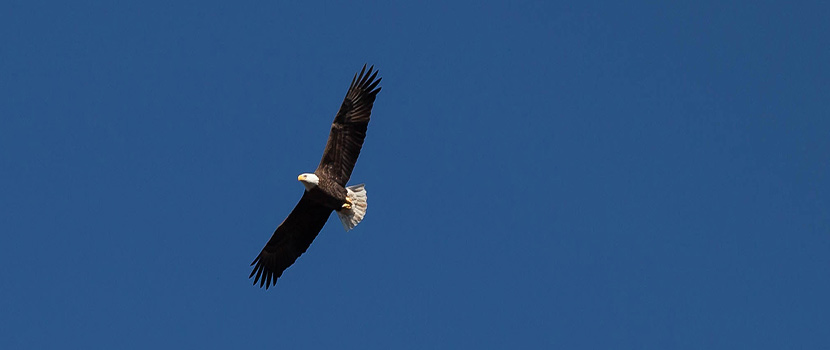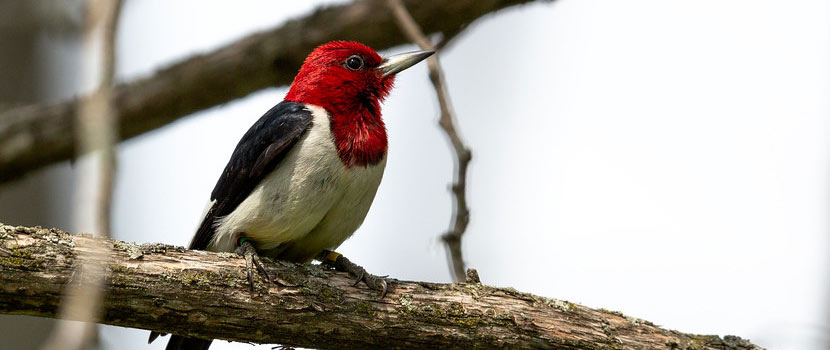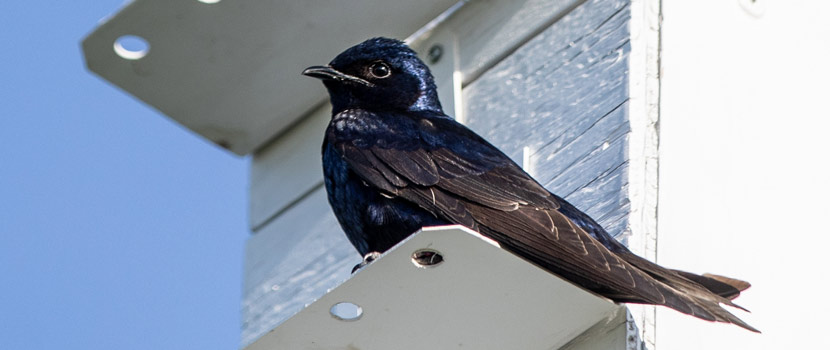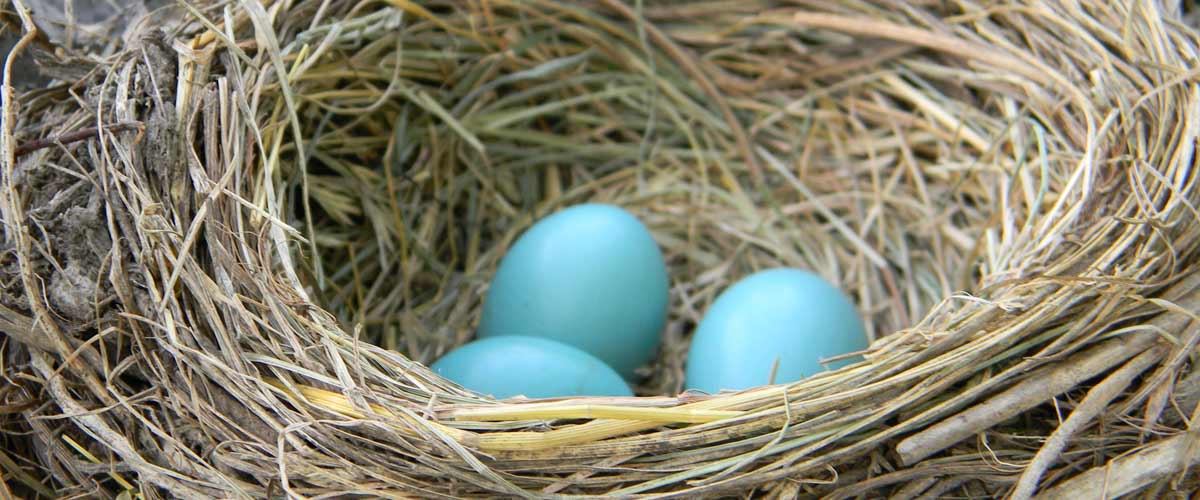
At Three Rivers Park District, we have some incredible habitat that boasts numerous species of birds that actively seek out our parks for nesting sites. With well over a hundred different nesting birds that can be found within our parks, the challenge is choosing which species to discuss. I think the most logical way to organize things is by where birds choose to nest.
Ground Nesters
Let’s begin with the ground-nesting birds. I have tried to pick species that choose to nest on the ground in forested, open and edge habitats.
American Woodcock
American woodcock are typically some of the first ground nesters of the breeding season. This year I found my first nest with four eggs in it on April 6! They are known to nest in a variety of woodlots, but I typically find them in dry, open woods or along woodland edges.
Their nests are depressions in the leaves on the forest floor with the edges lined with a few small twigs. They typically lay four eggs, but one to five have been reported. These birds are often missed while incubating eggs because of their camouflage.
Woodcocks are crepuscular, meaning they are most active during dawn and dusk. This is especially true during March and early April while they are on their breeding grounds. The males can be seen conducting their tremendous display by fluttering around in circles like a tornado while simultaneously calling. This sky dance is a must-see if you have never had the opportunity.
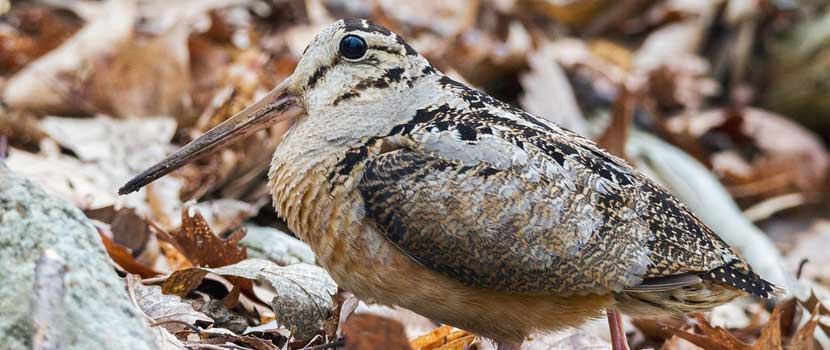
Blue-Winged Teal
Blue-winged teal are one secretive bird! It is amazing to me that even after their eggs hatch, I rarely see the hen with her ducklings on the small wetlands that dot our parks.
Blue-winged teal males stay with the female longer than many other duck species – until close to hatch. This is until the middle of June because these birds are late nesters.
The nests of blue-winged teal are found in a variety of open habitats from prairie to hayfields. They build their nest from dead grass stems and finish it with down from the duck’s breast. They are usually covered by grass clumps from all four sides and from above – very cryptic!
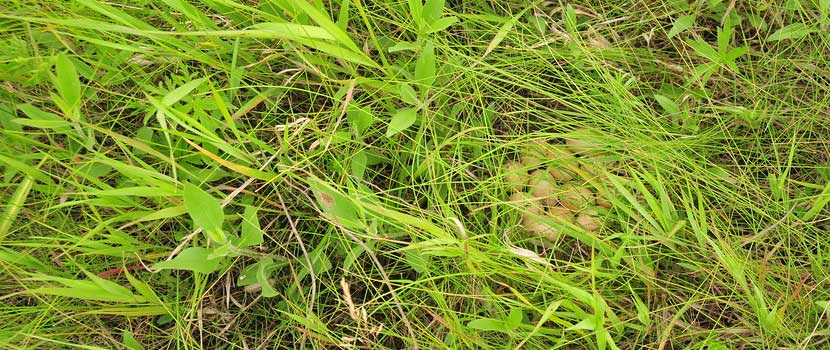
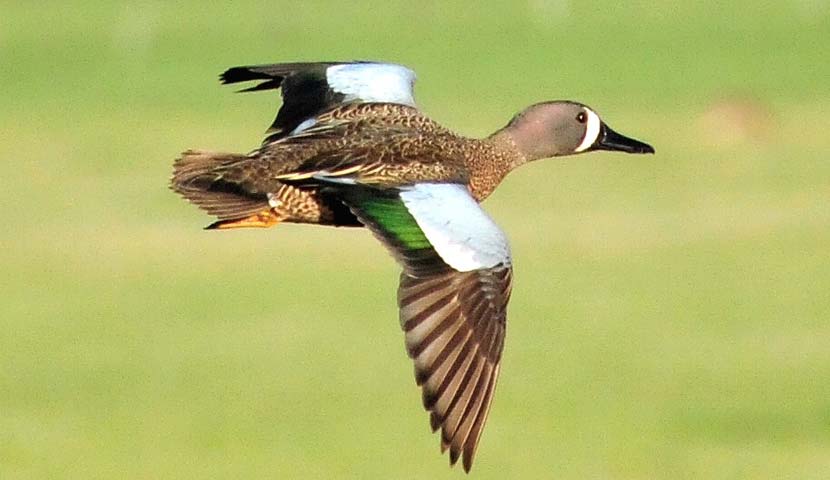
Wild Turkey
The wild turkeys are an example of a ground-nesting bird that seeks out a variety of habitats for nesting. The hen can be found nesting in brush piles and thick shrubbery as well as occasionally in open fields. I have seen them flush from the middle of some of our prairie units while we are conducting management activities.
Their nests are like woodcocks, but much larger and can have up to 17 eggs from multiple birds. They create a depression in the soil and use dead leaves or other dead plant material for a nest. Turkeys are becoming much more common in our parks, providing some great bird-watching pleasure. There is nothing like seeing a flock of turkeys work their way across a snow-covered landscape.
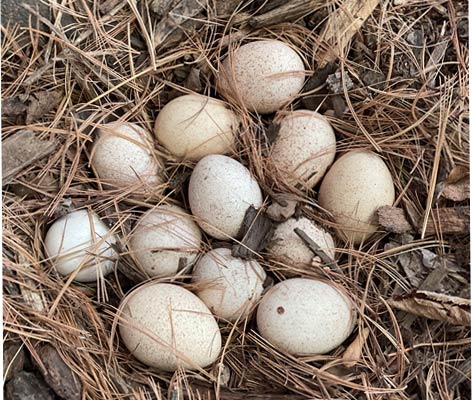
Eastern Meadowlarks
Eastern Meadowlarks are common nesters found in open grassland habitats, including in our larger restored prairie units. They require open sites free from too many bushes, trees and other woody material.
Their nests are constructed from grass and loosely attached to surrounding vegetation. The inside of their nests are made from smaller stems of grass and sometimes even hair. I have only been fortunate enough to find one eastern meadowlark nest on our grasslands. They typically have a trail where they walk in and out while simultaneously laying eggs.
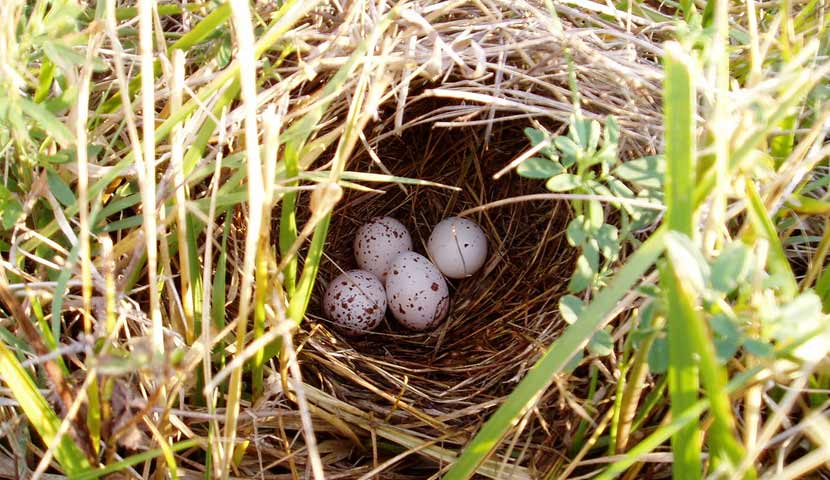
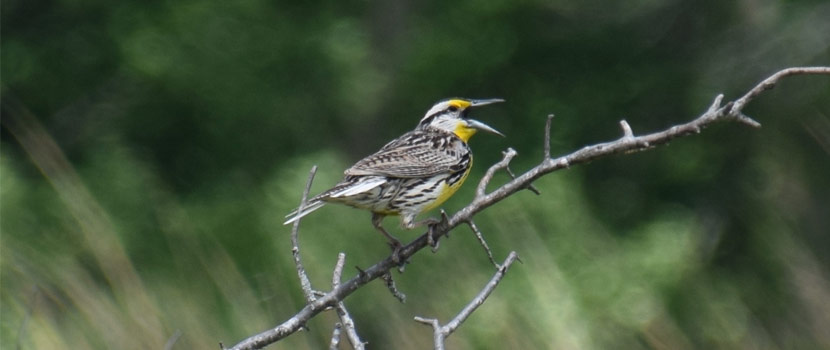
Wetland Nesters
Three Rivers Park District is fortunate to have larger contiguous habitats that allow for a variety of wetland types, all connected by the surrounding high-quality uplands. This allows for some great wetland nesting birds to make a home in our parks. Some of these birds are rarely seen because they nest away from trails. However, there are many locations where trails intersect wetlands and provide sightlines to see across the water.
Trumpeter Swans
One exception to not being able to easily observe wetland nesting species is the trumpeter swan. This large white bird is a regular nester in our parks. It seeks out smaller wetlands that are less than six feet deep.
Trumpeter swans use clumps of wetland material to create a mound. They then create the nest cup out of aquatic vegetation and feathers.
They build their nests well above the water line and sometimes on top of muskrat houses or beaver lodges to protect the eggs from fluctuating water levels. The nest can take almost a month for both the male and the female to construct.
Swans typically lay four to eight eggs, but I have seen clutches much larger than this. Seeing this species successfully nest reminds me of the Three Rivers' deep history of involvement in restoring this species to Minnesota.
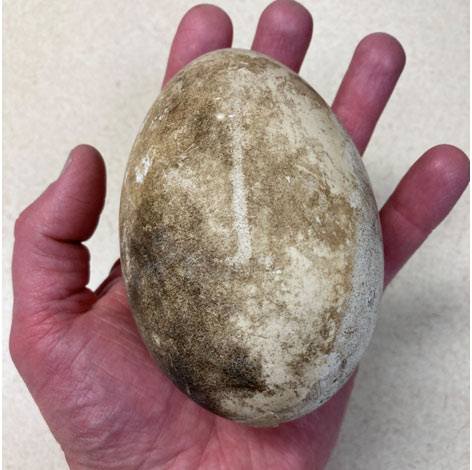
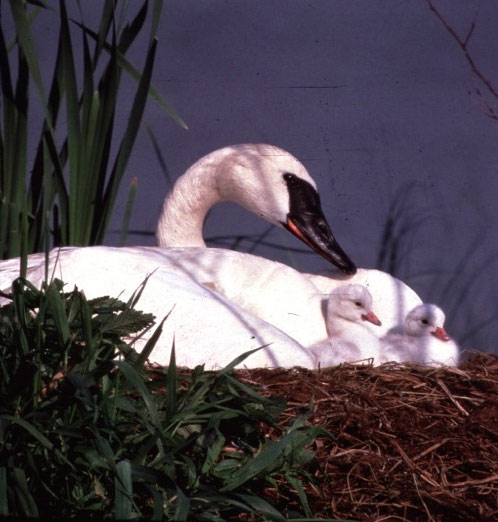
Pied-Billed Grebes
Pied-billed grebes are neat birds and incredibly good divers that are designed for life in the water. They typically stay in and around wetland vegetation during nesting and young rearing, making them difficult to see in the spring. An easier way to find these birds is to listen for their distinctive and loud calls.
Nests are built quickly and continually during egg laying and even during incubation. Grebes construct their nests out of floating vegetation and sometimes sticks. Both the male and the female participate in making the nest.
If you get a chance to see these birds shortly after hatching, you may get a chance to see the young hitching a ride on mom’s back while she swims around the wetland.
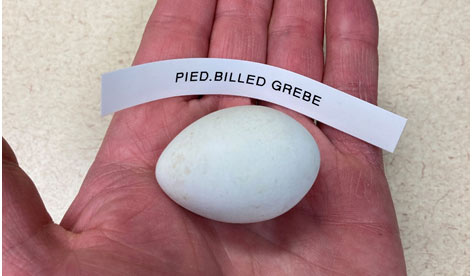
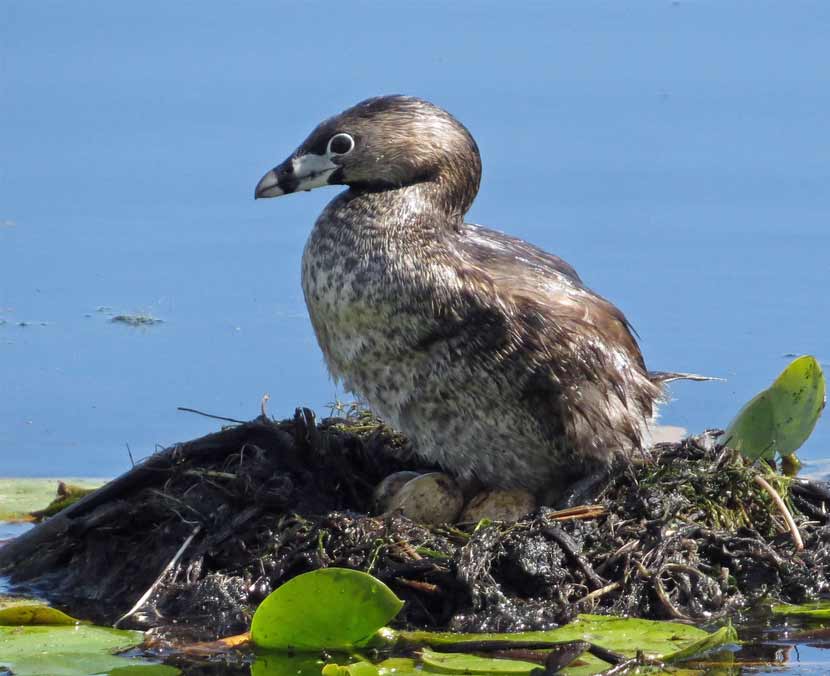
Marsh Wrens
Marsh wrens are a common nesting species in Three Rivers, and their nests can be easier to find than some other species along trails that cut through cattail marshes. This is because the male tends to build many dummy nests to attract females to the area. The female will finish the nest, which is egg-shaped, with a smaller hole at the top that leads down into a larger enclosed nest. The nest is made from dead vegetation.
Marsh wrens are very common in our parks, and if you learn their song, you will quickly realize how often a marsh houses this species.
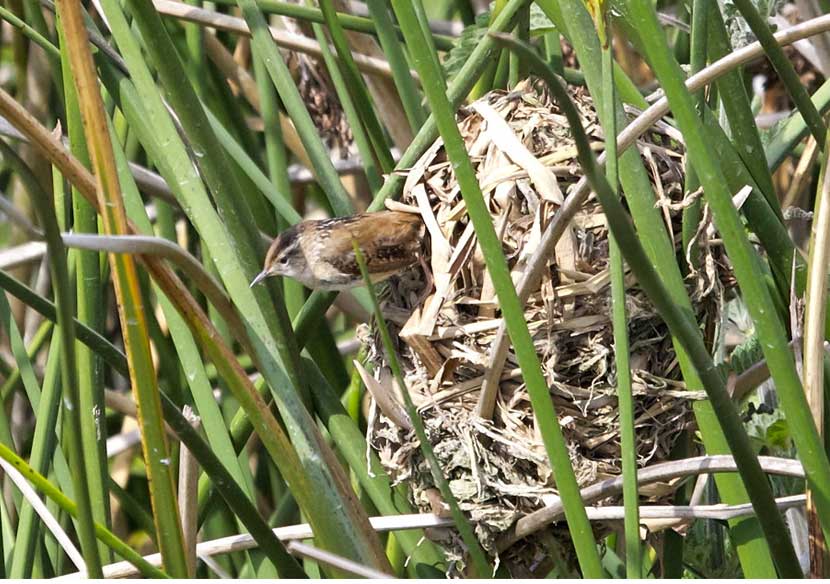
Tree and Cavity Nesters
Most of Three Rivers Park District was big woods (deciduous forest) prior to European settlement. This prompted us to start our own plant nursery for growing native trees and shrubs. Having the nursery has allowed us to reforest most of the upland areas of our parks, creating future great habitat for tree-nesting birds.
Cavity nesters are birds that require some sort of hole in a tree for them to nest in. Sometimes these holes are created by the birds themselves, but they are mostly found and used.
Wood Ducks
The wood duck population in our area has recovered because of wildlife management practices of providing a cavity (nest box) for ducks to nest in. When most of the larger trees were removed early on during European settlement, so were the cavities (holes in trees) that these birds used to nest in. At Three Rivers, we placed wooden boxes in nesting areas, which replicated the cavities wood ducks need to nest, helping this population quickly recover.
Wood ducks regularly nest inside of these boxes that are placed and maintained by Three Rivers volunteers. Their nests are lined with down from the hen’s breast. We know from egg membrane counts each winter season that about 500 wood duck ducklings fledge from close to 100 boxes in our parks.
Historically, wood ducks nested in old trees where a cavity was created from natural causes. Sometimes, they will use holes created by pileated woodpeckers. These cavities have been recorded to be as high as 60 feet. That is a long drop for the ducklings after hatch and is amazing how they just bounce and begin following the hen to the closest wetland to begin feeding.
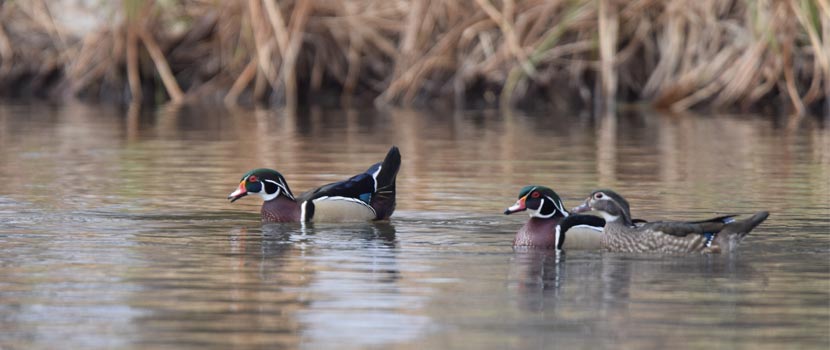
Downy Woodpeckers
Downy Woodpeckers can create their own nesting cavities in trees. Both the female and the male may excavate the hole, but more often than not it is the female. Downy woodpecker holes are commonly found on the underside of a branch, providing protection from above. The small entrance leads in and down to a three-inch diameter nest lined with wood chips from excavating. These nests are almost never seen since they can be very high in a tree. However, downy woodpeckers are a very common year-round resident within our parks.
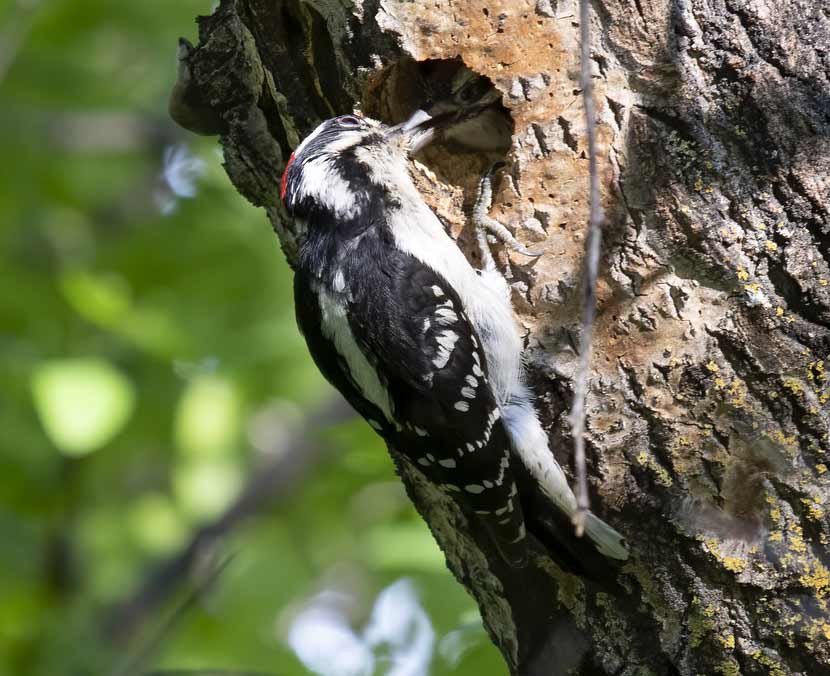
Chipping Sparrows
Chipping sparrows are an example of a bird that builds a nest in trees in the mid canopy, not all of the way at the top of trees. This commonly found species can be seen in tree-lined neighborhoods, but they typically choose grassy woodlands to construct their nests. Female chipping sparrows build the nest, while males ensures no intruders interfere. The nest is built out of grasses and stringy roots, and you can often see through the nest from below. These nests are hard to find amongst the foliage.
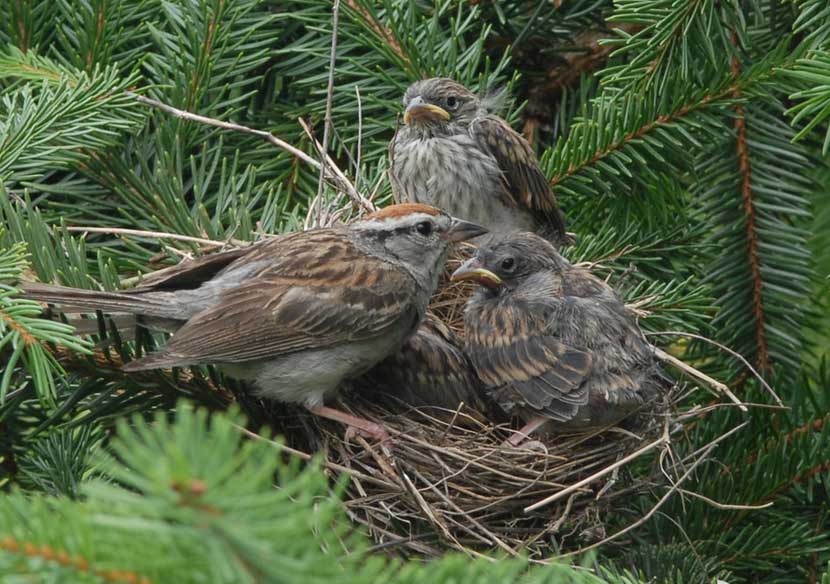
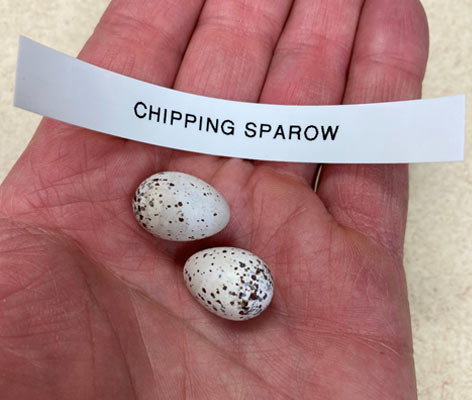
Eastern Wood-Pewee
Eastern wood-pewees build nests on top of branches far from the trunk of the tree. Their nests are small and camouflaged using moss and lichens. They construct their nests using a large variety of materials from spider webs and hair, to sticks, stems and grass.
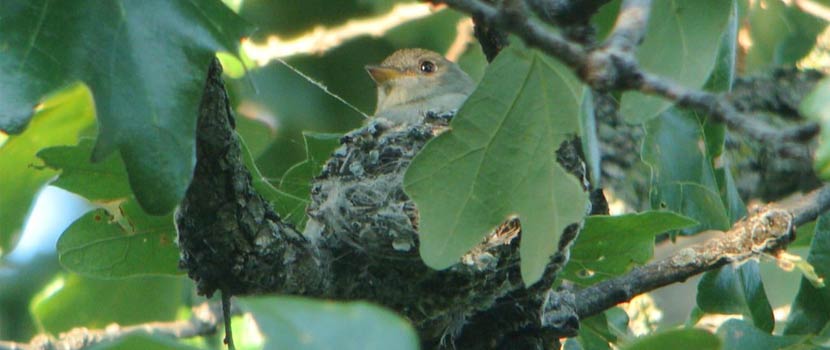
Other Tree Nesters
Some other noteworthy nesters are commonly found in neighborhoods because they have adapted well to nesting on human-made structures. They include the American robin and the eastern phoebe. Both birds construct their nests out of grasses and moss and mud and can easily “attach” their nests to structures.
Parasitic Nesters
The last nester that I feel is necessary to mention is a parasitic nester called the brown-headed cowbird. This bird does not build any nest at all, but instead chooses to parasitize other species by laying their eggs in other bird’s nests for them to incubate and raise. This is an interesting strategy that differs from any other native species in this area.
These are just a few of the many nesting birds you can find in Three Rivers. Hopefully, this article sparks your curiosity and leads you to learn more about our native nesters.
Banner image: "File:American Robin Nest with Eggs.jpg" by Laslovarga is licensed under CC BY-SA 3.0
About the Author
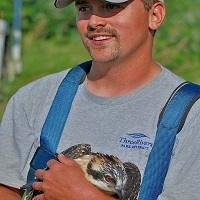
Steven Hogg is the Wildlife Supervisor at Three Rivers Park District and has been working for the Park District for 13 years. After graduating from the University of Alberta with a degree in Environmental and Conservation Biology, he moved to Minnesota to marry his beautiful Minnesota bride. Steven has always had a passion and dedication for wildlife, even when he was young. This passion is what lead him into a career where he strives for the proper orchestration of research, management, and politics to ensure natural resources and wildlife are given a voice. In his spare time, which there is little of with his three kids, Steven likes to farm, hunt, and fish.
Related Blog Posts
The Mississippi Flyway: A Bird Highway Through The Twin Cities
By: Anders Hanson
The most used bird migration path in North America passes right through the heart of the Twin Cities. Learn about the Mississippi Flyway, where to look for birds, and how you can help protect these migrators.
The Search for the Red-headed Woodpecker
By: John Moriarty
Red-headed woodpeckers are striking birds that we think could thrive in Three Rivers — but right now we don't have many. Learn what we're doing to investigate why this might be and how we hope to attract them to our parks.
How We're Protecting Purple Martins at Three Rivers
By: Angela Grill
Purple martin numbers are in decline in the Upper Midwest. But with the help of dedicated volunteers, Three Rivers has successfully increased the martin populations in our parks.
